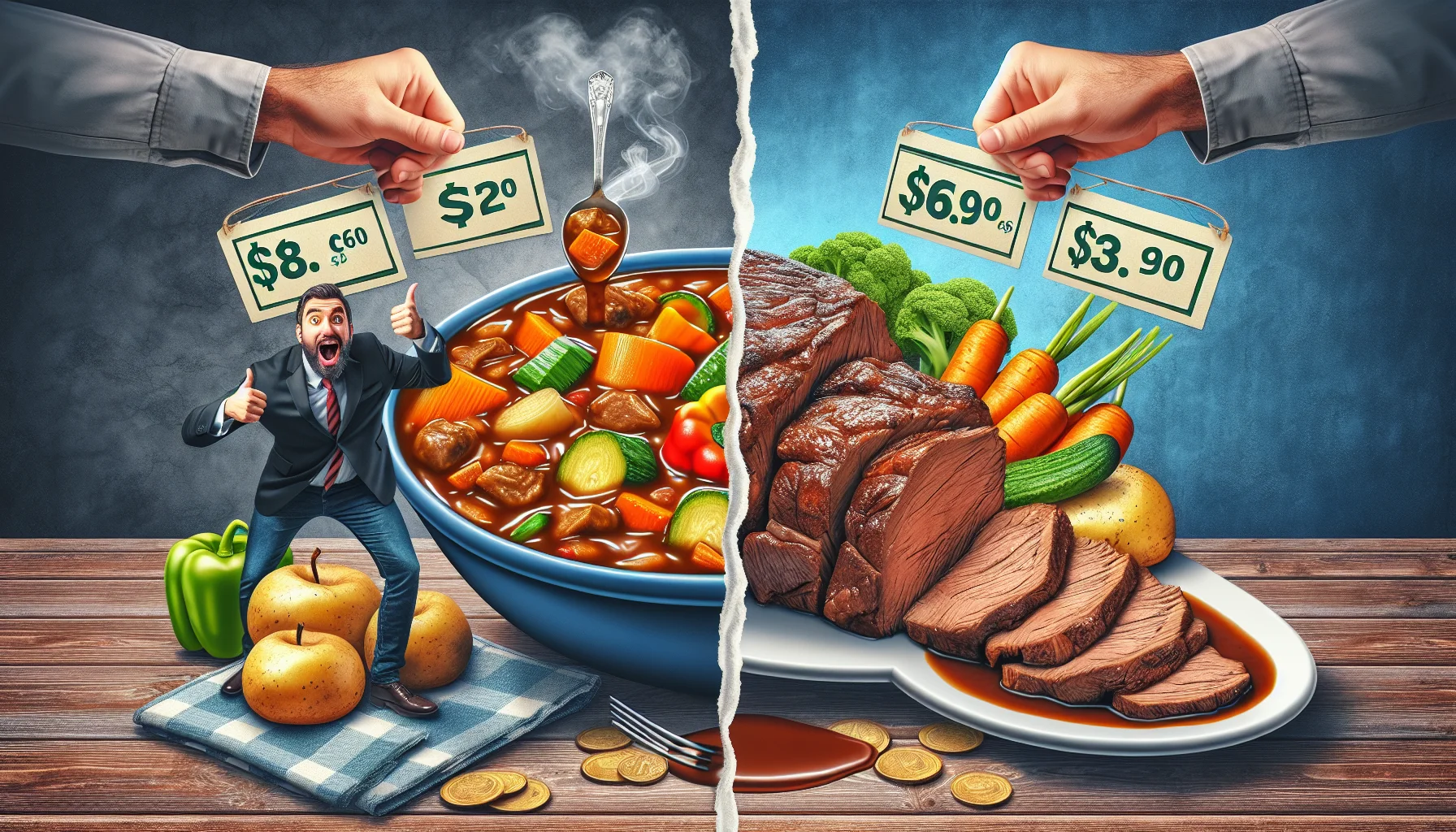Beef stew vs pot roast Quiz
Test Your Knowledge
Question of
Beef Stew vs Pot Roast: A Healthy Eating Perspective
When it comes to comfort food, beef stew and pot roast often top the list. However, for those of us trying to maintain a healthy diet, it's important to understand how these two dishes compare. Both are traditional dishes that have warmed hearts and homes for generations, but they differ significantly in preparation, ingredients, and nutritional values. This comparison aims to shed light on which dish might be a better fit for those who are health-conscious, considering factors such as fat content, calorie count, and the balance of nutrients. Let’s dive into the details to help you make an informed decision for your next hearty meal.
What is Beef Stew?
Beef stew is a hearty, traditional dish known for its rich flavors and tender beef pieces simmered to perfection. At its core, beef stew consists of bite-sized chunks of beef that are browned and then slow-cooked in a liquid base, often beef broth or stock, to ensure they become tender and flavorful. The stew is also loaded with a variety of vegetables, such as potatoes, carrots, onions, and sometimes peas or celery, adding to its nutritious profile and depth of taste. Herbs and spices, including bay leaves, thyme, and garlic, are incorporated to enhance the stew's aroma and flavor. The cooking process, which involves simmering the stew over low heat for several hours, allows the ingredients to meld together, creating a comforting and satisfying dish that's perfect for cold days or any time a hearty meal is desired.
What is Pot Roast?
Pot roast is a hearty, traditional dish known for its tender, flavorful meat and rich gravy. It's typically made using a tough cut of beef, such as chuck roast, which is slowly cooked at a low temperature to break down the tough fibers, resulting in a melt-in-your-mouth texture. The meat is often seared to develop a deep, complex flavor before it's braised in a cooking liquid that can include broth, wine, or water, along with aromatic vegetables like onions, carrots, and celery. This slow-cooking process not only tenderizes the meat but also allows the flavors of the ingredients to meld together, creating a savory, comforting dish that's perfect for a family dinner.
Nutritional Comparison
| Nutrient | Beef Stew (per 100g) | Pot Roast (per 100g) |
|---|---|---|
| Calories | 176 | 191 |
| Fat | 10g | 11g |
| Saturated Fat | 4g | 4.5g |
| Cholesterol | 60mg | 72mg |
| Protein | 20g | 22g |
| Carbohydrates | 2g | 0g |
| Fiber | 0.5g | 0g |
| Sugar | 1g | 0g |
| Sodium | 500mg | 370mg |
Health Benefits of Beef Stew
- Rich in Protein: Beef stew is an excellent source of high-quality protein, which is essential for muscle repair and growth.
- Iron-Boost: The beef in stew provides a significant amount of iron, crucial for forming red blood cells and preventing anemia.
- Loaded with Vegetables: Beef stew can be packed with a variety of vegetables, increasing your intake of fiber, vitamins, and minerals.
- Provides Essential Fats: Beef contains essential fats that are important for brain health and reducing inflammation.
- Comfort Food with Nutritional Value: While being a comfort food, beef stew can be part of a balanced diet, offering warmth and nutrition.
- Collagen and Gelatin: Slow cooking beef releases collagen and gelatin, supporting joint health and digestive wellness.
- Immune System Support: The nutrients found in beef stew, such as zinc and selenium, are vital for a healthy immune system.
- Energy Production: B vitamins in beef stew play a key role in energy production, helping to maintain vitality throughout the day.
Health Benefits of Pot Roast
- Rich in Proteins: Essential for muscle repair and growth.
- Contains Iron: Helps in preventing anemia and boosting energy levels.
- Source of B Vitamins: Vital for energy production and maintaining healthy brain function.
- Provides Zinc: Supports immune system health and wound healing.
- Low in Carbohydrates: Makes it a suitable option for low-carb diets.
- Can be Prepared with Vegetables: Enhances the dish's nutritional profile with additional vitamins and minerals.
- Collagen Content: May benefit skin and joint health.
- Satiety: High protein and fat content can help in feeling fuller for longer, aiding in weight management.
Conclusion: Making the Healthier Choice
After comparing the nutritional profiles, health benefits, and potential drawbacks of the options discussed, it becomes evident that making the healthier choice depends significantly on individual dietary goals and health needs. Considering the evidence provided, the option offering higher nutritional value, fewer processed ingredients, and aligning with most dietary guidelines would be recommended for those aiming to improve their overall health. It's crucial to consider personal health conditions, dietary restrictions, and nutritional needs when making this choice. Ultimately, opting for whole, minimally processed foods and a balanced diet is advisable for maintaining good health.












